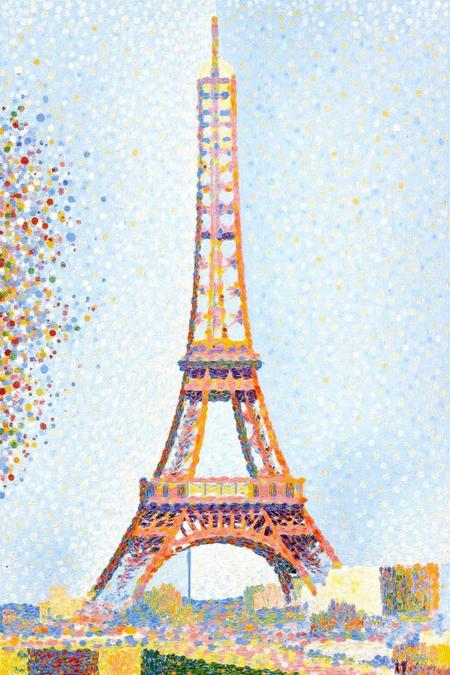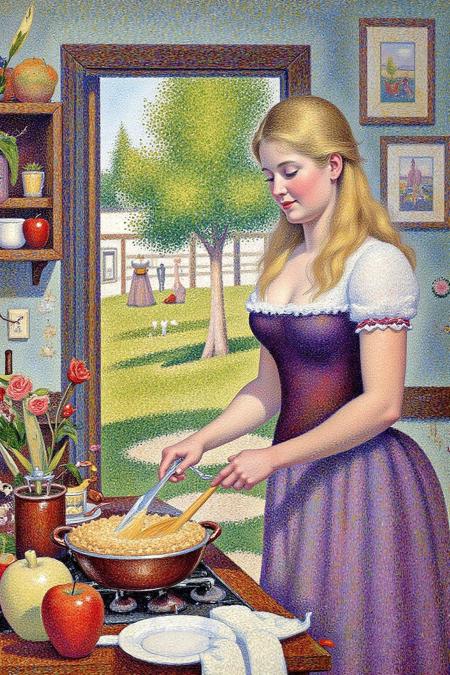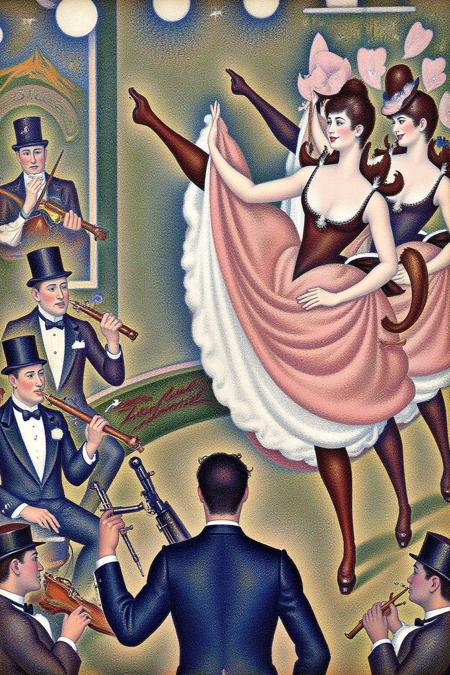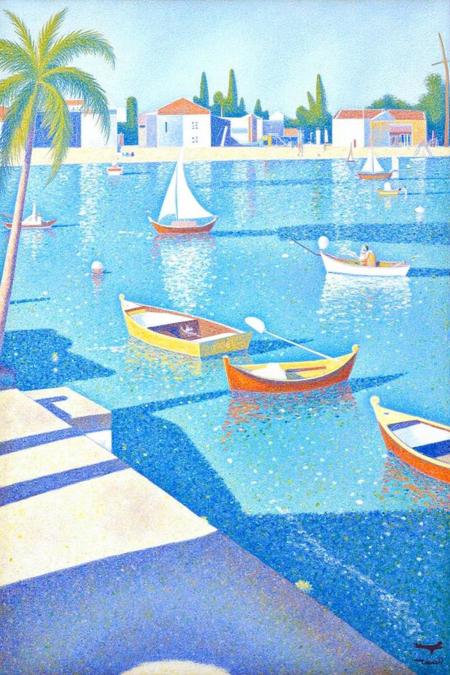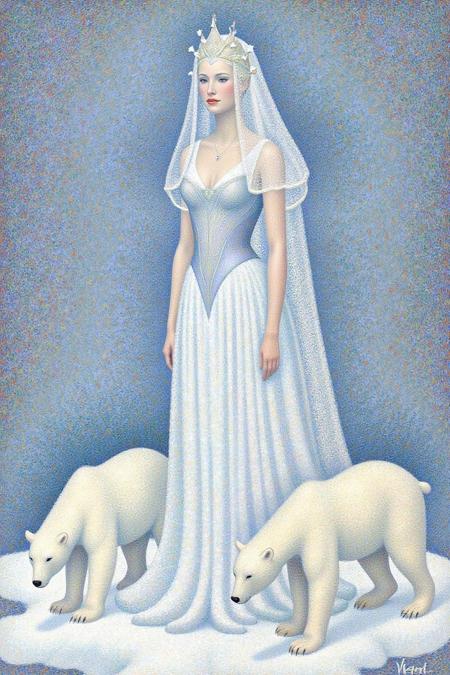
Trained on fourteen pointillist paintings by Georges Pierre Seurat. To see his works, please go to https://www.wikiart.org/en/georges-seurat.
Due to the unfortunate fact the Seurat died at the age of 31, the number of pointillistic paintings by him is actually rather small. But they are all masterpieces, so I used them all in the training set ??.
Georges Seurat (1859–1891) was a French post-Impressionist painter and the pioneer of Pointillism, a technique that uses small, distinct dots of color applied in patterns to form an image. His innovative approach to color theory and meticulous painting techniques had a significant impact on the development of modern art.
Biography
-
Early Life:
-
Born in Paris, Seurat came from a middle-class family.
-
He studied art at the École Municipale de Sculpture et Dessin and later at the prestigious École des Beaux-Arts in Paris.
-
-
Artistic Training:
-
Seurat was deeply influenced by classical traditions but sought to move beyond Impressionism, focusing on a more scientific and structured approach to art.
-
He studied the theories of Michel Eugène Chevreul (color contrast) and Ogden Rood (optical color mixing), which shaped his development of Pointillism.
-
-
Tragic Early Death:
-
Seurat died young, at the age of 31, likely from meningitis, pneumonia, or a similar illness. Despite his short life, his legacy as a groundbreaking artist endures.
-
Artistic Contributions
-
Pointillism/Divisionism:
-
Seurat is best known for developing Pointillism (also called Divisionism), a technique where small dots of pure color are placed next to one another on the canvas.
-
The colors blend optically when viewed from a distance, creating a luminous and vibrant effect.
-
-
Focus on Science in Art:
-
Seurat believed in a systematic approach to art, combining scientific theories of light and color with artistic practice.
-
He sought to evoke harmony and order in his work through precise composition, geometry, and a deep understanding of color dynamics.
-
-
Themes:
-
His paintings often depict modern urban and leisure scenes, capturing the changing society of late 19th-century France.
-
His figures are stylized and often lack emotional expressions, emphasizing form and structure over individual personalities.
-
Famous Works
-
A Sunday on La Grande Jatte (1884–1886):
-
Seurat’s most famous painting and a masterpiece of Pointillism.
-
Depicts Parisians enjoying leisure time on the banks of the Seine River.
-
The painting combines vibrant color, intricate dot patterns, and a monumental sense of stillness and order.
-
-
Bathers at Asnières (1884):
-
Shows working-class individuals relaxing by the Seine River, in contrast to the bourgeois subjects of La Grande Jatte.
-
The work is notable for its expansive, sunlit atmosphere and pioneering use of Divisionism.
-
-
The Circus (1890–1891):
-
Seurat’s final work, left unfinished at the time of his death.
-
Features dynamic movement and contrasts the controlled composition of his earlier works with the excitement of a circus performance.
-
Influence and Legacy
-
Impact on Modern Art:
-
Seurat’s scientific approach to painting inspired artists such as Paul Signac, who further developed Pointillism, and influenced movements like Fauvism and Cubism.
-
His focus on form and structure also had a lasting impact on later modernists, including Piet Mondrian and Kazimir Malevich.
-
-
Pioneering New Techniques:
-
By integrating art and science, Seurat expanded the boundaries of artistic practice and opened new possibilities for experimentation.
-
-
Recognition:
-
Although Seurat faced mixed reception during his lifetime, his work gained significant acclaim after his death.
-
Today, he is regarded as one of the most influential figures in the transition from Impressionism to modern art.
-
Artistic Style
-
Technique: Meticulous application of dots and dashes of paint in calculated patterns.
-
Composition: Carefully constructed, with an emphasis on balance, geometry, and harmony.
-
Color Theory: Used complementary colors and optical blending to create vibrant, luminous effects.
Key Characteristics of His Work
-
A focus on stillness and timelessness in his subjects.
-
Exploration of social life, leisure, and urbanization in late 19th-century France.
-
A groundbreaking method of combining art with scientific principles of color and light.
Georges Seurat’s innovative techniques and scientific approach to art marked a significant departure from Impressionism and set the stage for the development of modern art. His work continues to be celebrated for its precision, creativity, and lasting influence.
描述:
This is epoch 12, the rest are at:
训练词语: geoseu1 pointillist painting
名称: geoseu1_cap_d6a3e12.safetensors
大小 (KB): 56203
类型: Model
Pickle 扫描结果: Success
Pickle 扫描信息: No Pickle imports
病毒扫描结果: Success




